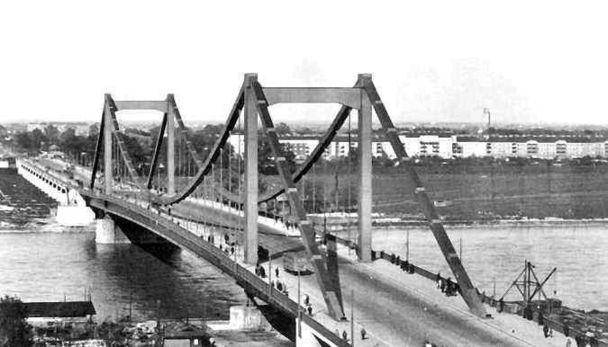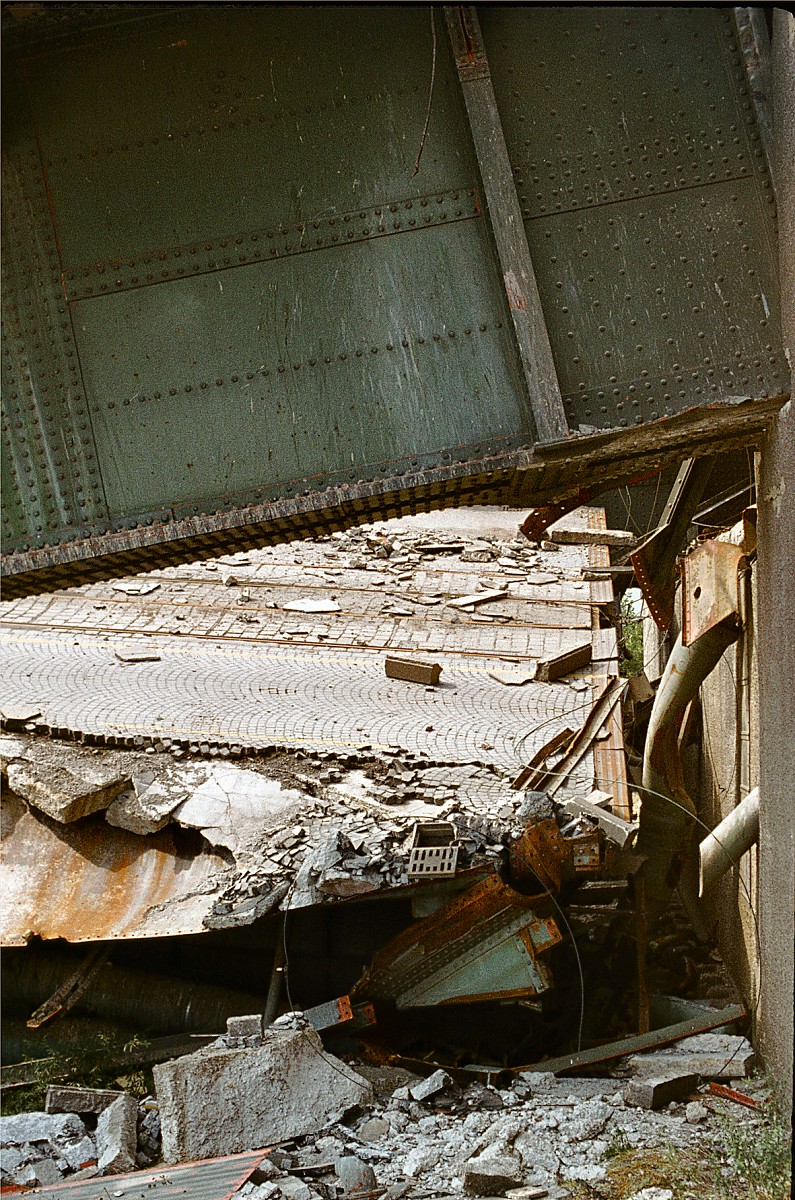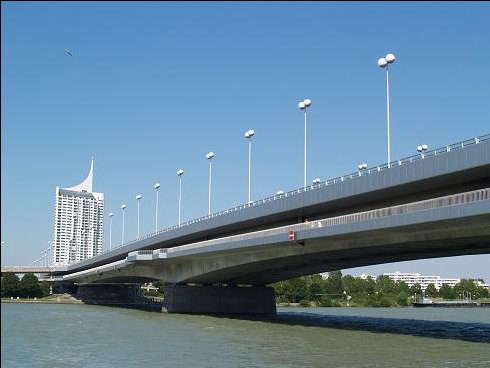The Reichsbrücke in Vienna, spanning the Danube between Mexicoplatz and Donaustadt, is one of Vienna’s most important bridges. On any given day it carries thousands of commuters back and forth, and links the city center with Kagran to the northeast.

Sunday, August 1, 1976 was different. At about 5:00 AM, according to an eyewitness, the entire bridge lifted up about half a meter, and simply collapsed along its entire length into the Danube. It didn’t take long for word to get around, and it was considered a miracle that it happened both on a Sunday and so early in the morning. Had the bridge failed during a rush hour, hundreds might have been killed – as it is, only five people in four vehicles were on the bridge, and of these, only one lost his life.
I was living in Vienna at the time, and after Church services, we wandered down to see the site for ourselves.

A lone bus sits in the middle of the span. The driver was rescued after a few hours, and the bus now sits in Vienna’s Tramway Museum.

A portion of the bridge’s bed at the juncture with the pylon sits collaped on the ground, with tram tracks and cobblestones visible.

The other side of the collapsed bridge/pylon junction.

Looking across the Danube to the opposite pylon, with the stranded bus visible in the middle.
The next day’s headline of the Neue Kronen Zeitung, one of Vienna’s two tabloid papers, screamed “Ursache Schlamperei!” (Cause: Sloppiness!) and proceeded to point the finger at poorly conducted or skipped-over inspections.
All of Austria is feeling the impact of the collapse of the Imperial Bridge. An unfathomable accident, so unbelieveable that it was first thought to be a terrorist attack. Soon, however, it was discovered that the oversight of this, the most important bridge in Austria, was not conducted according to international standards, and without the help of modern technical inspection instruments. Sloppiness was the shameful cause of the catastrophe.
Neue Kronen Zeitung, 2 August 1976, page 1
After the various commissions had finished their studies, however, it was determined that the causes were more mundane. Structural failure of the bearings had begun early because of poor-quality concrete casings, which – while not load bearing – had allowed water to penetrate down to the bearings themselves and begin the process of deterioration. The bearings were surrounded by massive granite boulders, and hence could not have been inspected in any event.
A replacement bridge was begun in 1978 and dedicated in 1980. In the interim, Vienna hastily constructed two temporary bridges to carry traffic across the Danube, which were in use for four years.

The new Reichsbrücke.
It was pretty wild to be so close to a disaster of this magnitude. We expect our big bridges and things to be pretty solid, and when they are not, it’s always a bit disconcerting. Fortunate it was that so few people were directly impacted.
The Old Wolf has spoken.

The old Memorial Bridge across the Missouri River between Bismarck and Mandan, ND was discovered to have serious problems with the concrete in one or two of the main pylons–so it was given a temporary fix and soon replaced. Otherwise, we could have had a similar failure. The concrete in the pylon was like so much rubble–mostly chunks a foot or less across…
And I thought bridge work at the dentist’s office was expensive… 9_9
Hello!
I’m working on a documentary and I would like to include the collpase of the Reichsbrucke Bridge, is there any way I could contact you? My email is alessia.camoirano@britesparkfilms.com